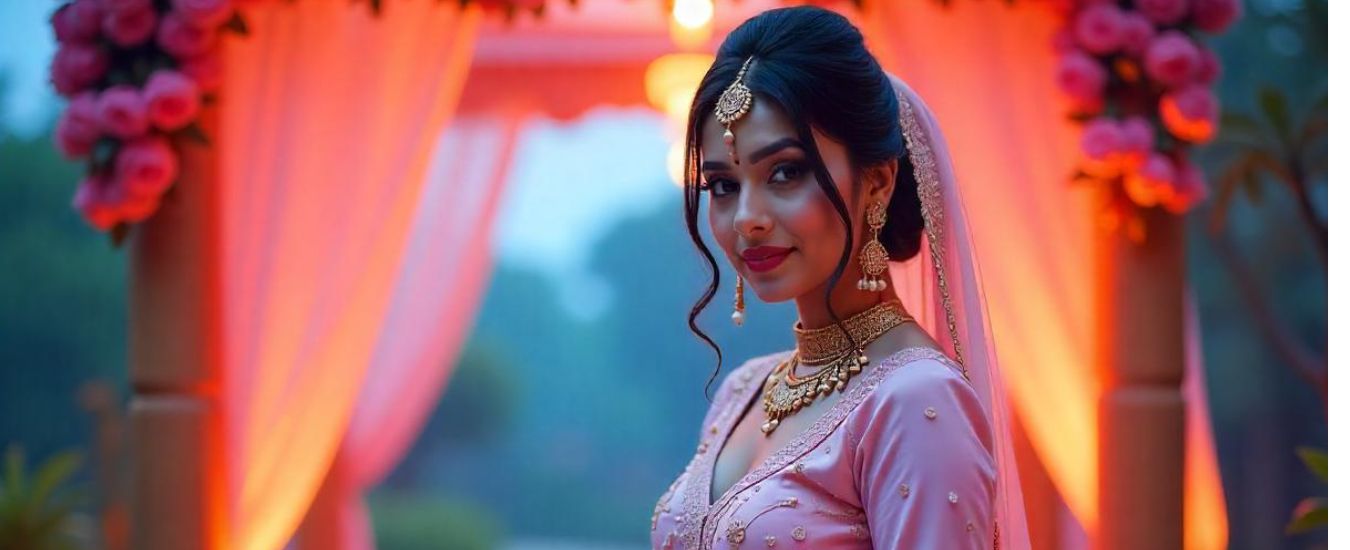The Kaleera Ceremony is a soulful blend of tradition and trend, filled with love, rituals, and emotional transitions. Whether you’re the bride, bridesmaid, or just a guest, this event is a joyful chapter in the Indian wedding saga. It’s where sacred symbolism meets laughter, glam, and just a dash of matchmaking fun!
Weddings in India are a symphony of cultures, rituals, and symbolic celebrations. Among the many enchanting customs—especially seen in North Indian and Punjabi weddings—is the vibrant and meaningful Kaleera Ceremony. More than just a pre-wedding ritual, it’s a celebration infused with sisterhood, joy, and good fortune.
Let’s explore the symbolism, history, and modern relevance of kaleeras—those beautiful, dangling ornaments that adorn a bride’s wrists—and why they are an auspicious element in Hindu and Sikh weddings.
What is the Kaleera Ceremony?
The Kaleera Ceremony is a pre-wedding tradition where the bride’s female relatives and friends tie umbrella-shaped gold or silver kaleeras to her bridal chooda (a set of red and white wedding bangles). These auspicious accessories symbolize blessings, fertility, and prosperity for the bride’s new journey.
Cultural Significance and Origins
Originating from Punjabi and Sikh customs, kaleeras were historically made of dry fruits, betel nuts, and coconut slices—symbols of abundance and health. Over time, this ritual has been embraced across regions, becoming a popular aspect of pan-Indian Hindu wedding rituals.
When and Where Does It Happen?
The Kaleera Ceremony is usually performed alongside the Chooda Ceremony, typically a day before the wedding. It often takes place at the bride’s home or a decorated wedding venue filled with fairy lights, marigolds, and colourful drapes—an intimate setup for this emotional function.
Ritual Flow and Symbolism
- Chooda Application: The maternal uncle (mama) dips the bangles in rose water or milk, then helps the bride wear them—a sacred step before marriage.
- Tying Kaleeras: The bride’s sisters and cousins take turns tying kaleeras while offering prayers and playful advice.
- Kaleera Drop Ritual: The bride shakes her hands above her bridesmaids’ heads. If a kaleera falls, it’s believed that the girl is the next to marry—a desi version of the bouquet toss!
Symbolism of Kaleeras
- Blessings & Protection: Kaleeras serve as symbolic shields, warding off negativity and showering blessings.
- Fertility & Prosperity: Ingredients like betel nuts, Mauli threads, and coconut slices represent a thriving married life.
- Traditional Materials: In the past, natural materials were used. Now, metallic, floral, and designer kaleeras are in trend, especially for day weddings.
Modern Trends and Personalization
- Floral Kaleeras: Fresh flowers like jasmine and roses are used for a lightweight, fragrant touch.
- Customized Kaleeras: Brides now add miniature photo frames, initials, charms, and even wedding hashtags.
- Keepsake Ideas: Many brides preserve their kaleeras or use them as wedding décor or home keepsakes.
Emotional and Symbolic Aspects
This ceremony reflects the emotional bond between the bride and her girl gang, a moment filled with laughter, tears, and blessings. It signifies her transition from maidenhood to marriage, guided by the love of her closest ones.
Celebrity Inspiration
- Anushka Sharma: Her floral kaleeras and pastel lehenga became a trend.
- Katrina Kaif: Wore kaleeras with custom messages and symbolic charms.
- Kiara Advani: Her kaleeras included stars, hearts, and cultural elements, blending tradition with modern love.
Planning a Kaleera Ceremony
- Venue Ideas: Host in a garden, courtyard, or wedding mandap space with traditional and modern décor.
- Dress Code: Brides often wear floral lehengas, embroidered dupattas, or fusion outfits.
- Music & Dance: Add dhol, bhangra beats, or a Haldi-like vibe with friends dancing and celebrating.
- DIY Options: Gather your tribe for a craft night to make personalized kaleeras using pearls, ribbons, or silk flowers.
FAQs
What does it mean when a kaleera falls on someone?
She’s believed to be the next in line to marry—like catching the bouquet but with a desi twist!
Is the Kaleera Ceremony only for Punjabi weddings?
While rooted in Punjabi and Sikh traditions, many Hindu and Indian brides now embrace it as part of their wedding celebrations.
Can Kaleeras be reused?
Traditionally worn once, but many brides now repurpose them as keepsakes or décor.
What should you wear?
Opt for a comfortable yet festive outfit—a floral lehenga, a mirror-work kurti, or fusion wear for full desi glam.
Are there taboos?
Avoid dropping or damaging the kaleeras before tying, as they are considered auspicious symbols.
